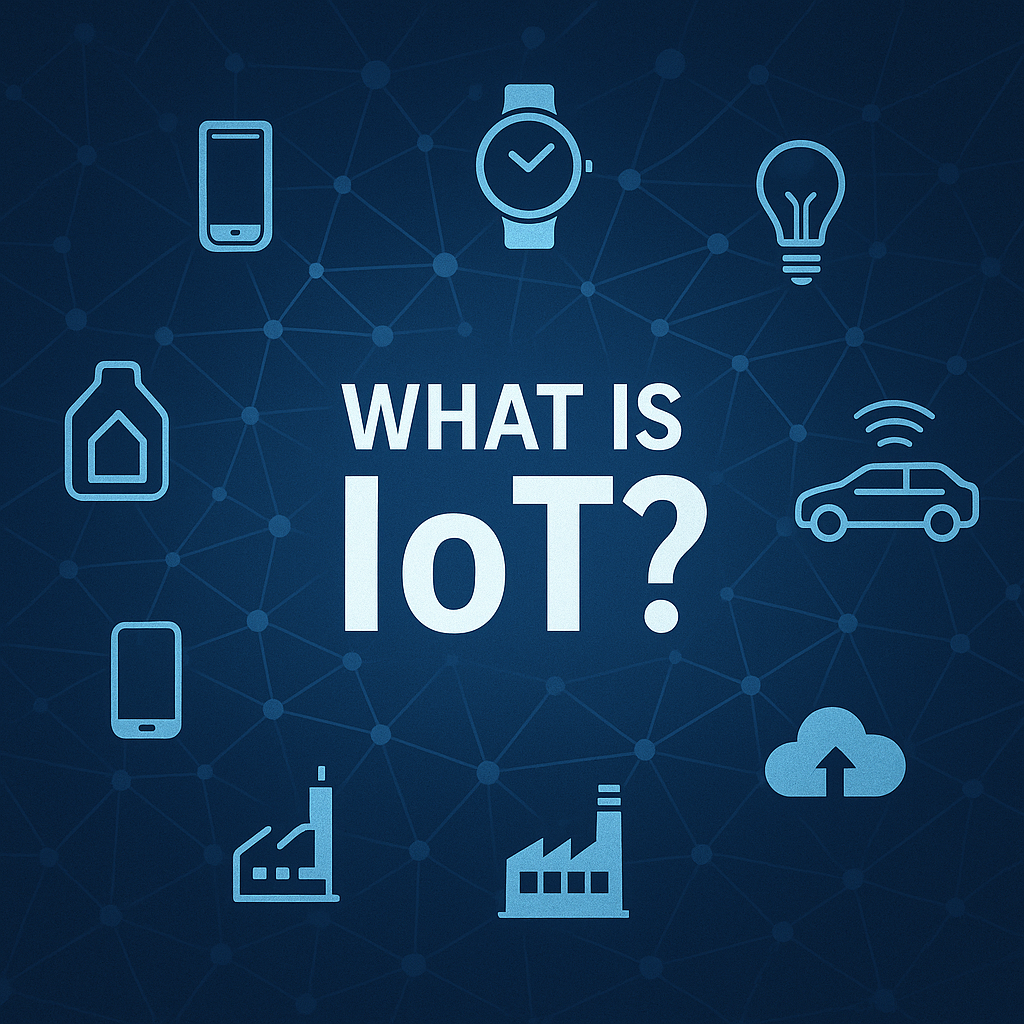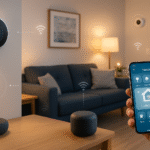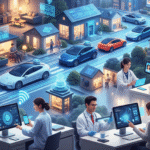In an increasingly connected world, you’ve probably heard the term Internet of Things (IoT) thrown around in conversations about smart homes, wearable tech, or even modern agriculture. But what is IoT, and why should it matter to you? In this beginner-friendly guide, we’ll demystify IoT, explain how it works, and show you the exciting ways it’s reshaping our daily lives and industries.
Understanding the Basics of IoT
What Does IoT Actually Mean?
The term Internet of Things refers to the vast network of physical devices that are connected to the internet and can collect, share, and act on data. These devices can range from smartphones and smart thermostats to industrial machines and connected vehicles.
Key Characteristics of IoT:
- Connectivity: Devices communicate through the internet or local networks.
- Automation and Control: Devices can be controlled remotely.
- Data Exchange: Real-time data is collected and transmitted.
- Scalability: Can scale from a single smart bulb to entire smart cities.
How Does IoT Work?
IoT works through a combination of sensors, software, and communication technologies that enable physical objects to collect and exchange data. Here’s a simplified breakdown:
The Four Main Components of an IoT System:
- Devices/Sensors: These collect data from the environment (e.g., temperature, motion, GPS location).
- Connectivity: Devices use Wi-Fi, Bluetooth, 5G, or other protocols to transmit data.
- Data Processing: Cloud servers or local devices analyze the data.
- User Interface: The user receives actionable insights via apps or dashboards.
Everyday Examples of IoT in Action
Smart Homes
Think of smart thermostats that adjust room temperature automatically or smart lights that you control with your phone. These are classic examples of consumer-level IoT in action.
Wearable Technology
Fitness trackers, smartwatches, and medical devices that monitor your heart rate or blood sugar are all IoT devices that enhance personal health and well-being.
Connected Cars
Modern vehicles use IoT to provide features like GPS navigation, emergency response systems, and vehicle diagnostics in real time.
Industrial IoT (IIoT)
In manufacturing, sensors monitor machinery to predict failures before they happen, increasing safety and productivity. This is called predictive maintenance and is a hallmark of IIoT.
Why Is IoT Important?
IoT is not just a buzzword—it’s a transformational force across multiple industries.
Benefits of IoT:
- Efficiency: Automates processes, saving time and resources.
- Convenience: Simplifies life with remote control and monitoring.
- Safety: Enhances home and workplace safety through real-time alerts.
- Data-Driven Decisions: Provides valuable insights for businesses and users alike.
Challenges and Concerns
While the benefits are compelling, IoT does present some challenges:
Top IoT Concerns:
- Privacy: More data means more risk of personal information being exposed.
- Security: Connected devices can be vulnerable to hacking if not properly secured.
- Compatibility: Devices from different manufacturers may not work well together.
- Complexity: Setting up and managing multiple devices can be confusing for beginners.
The Future of IoT
The future of IoT is incredibly promising. As technologies like 5G, edge computing, and AI continue to evolve, IoT devices will become faster, smarter, and even more integrated into our lives. We can expect to see:
- Smarter cities with connected infrastructure.
- Autonomous transportation systems.
- Healthcare powered by real-time patient monitoring.
- Eco-friendly homes with optimized energy consumption.
How to Get Started with IoT as a Beginner
1. Identify Your Needs
Do you want to make your home smarter, improve fitness tracking, or explore IoT for business? Clarifying your goals helps narrow down device options.
2. Choose Starter Devices
Begin with user-friendly devices like smart plugs, voice assistants (Alexa or Google Home), or smart bulbs. These are low-cost, easy to install, and offer a taste of IoT convenience.
3. Ensure Compatibility
Before purchasing, check if your devices work together—some platforms (e.g., Apple HomeKit, Google Assistant) require compatible products.
4. Stay Informed
IoT evolves quickly. Follow reputable tech blogs, forums, or YouTube channels to stay up to date and secure.
In conclusion, the Internet of Things is no longer just a concept for tech enthusiasts—it’s a growing part of everyday life that’s making homes, cities, and industries smarter and more efficient. By understanding what IoT is and how it works, you’re one step closer to joining the connected future.
Ready to explore IoT in your own life? Start small, stay secure, and experience the convenience of a smarter world—one device at a time.




Pingback: The Smart Factory Revolution: How Industrial IoT is Improving Efficiency in Manufacturing -
Pingback: What Makes a City Smart? Key Technologies Explained -